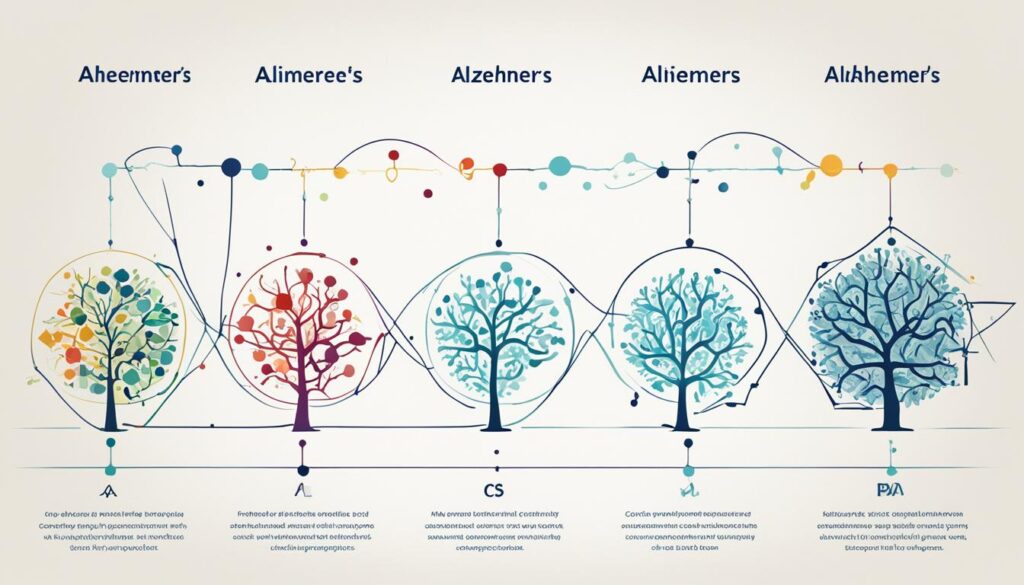Have you ever stared into your closet, filled with stylish apparel and fashionable clothing, and still felt like you had nothing to wear? I’ve been there, too. The struggle to put together trendy outfits that make you feel confident and express your personal style can be real. But fear not, because Al Zahaymer is here to help.
Al Zahaymer is your go-to online fashion store that understands the unique fashion needs of both men and women. With their curated selection of trendy outfits and attention to detail, they offer a range of options that will elevate your style game to new heights.
From chic dresses and statement accessories for women to dapper suits and sophisticated separates for men, Al Zahaymer has something for everyone. Their collection encompasses the latest fashion trends, ensuring that you always stay ahead of the curve.
So, next time you find yourself in a fashion rut, let Al Zahaymer be your guiding light. Discover a world of stylish possibilities and unlock your fashion potential with their expertly crafted pieces that are designed to make you look and feel your best.
Key Takeaways:
- Al Zahaymer offers a wide selection of stylish apparel and fashionable clothing for both men and women.
- Their curated collection includes trendy outfits that will elevate your style game.
- Stay ahead of the curve with Al Zahaymer’s latest fashion trends.
- Unlock your fashion potential and express your personal style with their expertly crafted pieces.
- Discover a world of stylish possibilities with Al Zahaymer.
Understanding Alzheimer’s Disease and Dementia
Alzheimer’s disease is a specific type of dementia that primarily affects memory, thinking, and learning. Dementia, on the other hand, refers to a decline in mental function that interferes with daily living. It is important to distinguish between these terms as Alzheimer’s is just one of the many causes of dementia.
As Alzheimer’s disease progresses, individuals may experience a decline in memory, which can manifest as forgetting important events, names, or places. There may also be difficulties with language, making communication challenging. Disorientation, mood swings, and changes in behavior and personality are common symptoms as well.
Dementia can range in severity from mild to severe, with those in the late stage of the disease depending entirely on others for assistance with daily tasks. It is a progressive condition, meaning that symptoms worsen over time.
Dementia can result from various factors that impact the parts of the brain responsible for learning, memory, decision-making, and language. Alzheimer’s disease accounts for at least two-thirds of dementia cases in people aged 65 and older, making it the most common cause in this age group. Other causes include vascular dementia, Lewy body dementia, and frontotemporal dementia.
Understanding the underlying mechanisms and symptoms of Alzheimer’s disease and dementia is crucial for early detection and effective management. By identifying the signs and seeking appropriate medical attention, individuals can access the necessary support and care.

As we delve deeper into this topic, let’s explore the prevalence and impact of Alzheimer’s disease in section 3.
The Impact and Prevalence of Alzheimer’s Disease
Alzheimer’s disease is a prevalent and life-altering condition that primarily affects individuals over the age of 65. As individuals age, the risk of developing Alzheimer’s disease increases, making it a significant concern for older adults and their families.
According to global statistics, it is estimated that one in ten people over the age of 65 have Alzheimer’s disease, with the prevalence rising to nearly a third of individuals over the age of 85. This high prevalence demonstrates the widespread impact of the disease on older populations worldwide.
Not only does Alzheimer’s disease affect a large number of individuals, but it is also ranked as the seventh leading cause of death globally. The disease’s devastating effects on cognition, memory, and daily functioning contribute to its classification as a common cause of death.
Furthermore, Alzheimer’s disease can also manifest in early-onset cases, occurring before the age of 65. While relatively rare, accounting for less than 10% of all Alzheimer’s cases, early-onset cases highlight the significance of the disease across different age groups.
To better understand the scale of Alzheimer’s disease, consider the following global statistics:
- An estimated 24 million people worldwide are affected by Alzheimer’s disease.
- Alzheimer’s disease accounts for at least two-thirds of all dementia cases in individuals aged 65 and older.
The impact of Alzheimer’s disease extends beyond the individual affected, as it poses a substantial financial burden on society. It is estimated that the annual cost of Alzheimer’s disease amounts to $1 trillion, reflecting the expenses associated with healthcare, caregiving, and support services.
The Prevalence of Alzheimer’s Disease by Age Group
To provide a clearer perspective on the age factor in Alzheimer’s disease, consider the following breakdown of prevalence by age group:
| Age Group | Prevalence of Alzheimer’s Disease |
|---|---|
| 65 and older | 1 in 10 individuals |
| 85 and older | Nearly a third of individuals |
| Early-onset cases (before age 65) | Less than 10% of all cases |
These statistics emphasize the significance of age as a risk factor for developing Alzheimer’s disease. By understanding the impact and prevalence of the disease, individuals and communities can be better equipped to address the challenges associated with Alzheimer’s and provide appropriate support and care.
The Stages of Alzheimer’s Disease
Alzheimer’s disease is a progressive condition that unfolds through various stages, although the experience can differ for each individual. Different organizations and healthcare providers use different terminology to describe these stages. However, they generally revolve around the progression of dementia, ranging from mild to severe.
Preclinical Stage
The preclinical stage of Alzheimer’s disease is characterized by a lack of noticeable symptoms. However, changes are already occurring in the brain. This stage can last for years, as the brain accumulates abnormal proteins and other changes that ultimately lead to the development of symptoms.
Mild Cognitive Impairment (MCI)
Mild cognitive impairment refers to a slight decline in mental abilities and can be considered a transitional stage between normal aging and dementia. Individuals with MCI may experience memory lapses, challenges with concentration, and difficulty with decision-making. However, these symptoms are not severe enough to significantly impact daily functioning.
Mild Dementia
Mild dementia is characterized by noticeable declines in memory and cognitive function. Individuals may struggle with remembering recent events, experience difficulty finding the right words, and exhibit challenges in problem-solving. Despite these cognitive changes, individuals with mild dementia can typically still perform their daily activities independently with some adaptations and support.
Moderate Dementia
Moderate dementia involves more significant impairments in daily functioning. Memory loss and cognitive decline become more pronounced, making it challenging to accomplish tasks independently. Individuals at this stage may experience confusion, disorientation, and difficulty recognizing familiar people and places. Assistance with activities of daily living, such as dressing and bathing, becomes necessary.
Severe Dementia
Severe dementia represents the most advanced stage of Alzheimer’s disease. Individuals in this stage are completely dependent on others for assistance with all aspects of daily living. Communication skills are severely impaired, and individuals may lose the ability to speak. Additionally, physical coordination and mobility may be affected. Caregivers play a crucial role in providing round-the-clock support and meeting the daily needs of individuals in this stage.
It is important to note that not all individuals will experience all stages of Alzheimer’s disease, and the progression can vary from person to person. Understanding the stages of the disease can aid in providing appropriate care and support at each stage of the journey.
| Stage | Symptoms | Level of Independence |
|---|---|---|
| Preclinical Stage | No noticeable symptoms, but changes in the brain | Independent |
| Mild Cognitive Impairment (MCI) | Slight decline in mental abilities, memory lapses, challenges with concentration | May require some support, but mostly independent |
| Mild Dementia | Noticeable memory and cognitive decline, difficulty with problem-solving | May require assistance with complex tasks, but mostly independent with support |
| Moderate Dementia | More significant impairments, confusion, disorientation | Requires assistance with daily activities |
| Severe Dementia | Complete dependence on others, severe cognitive and physical decline | Requires round-the-clock care and support |

The Media Framing of Islamists in Arabic Cinema: Adel Imam’s Movies as a Model
Adel Imam, a renowned Arab actor, has played various characters in movies that depict Islamists. The media framing of Islamists in Arabic cinema has been subject to analysis, and Adel Imam’s movies have been studied as a model for understanding the portrayal of Islamists through different character, theme, and role frames.
In Adel Imam’s movies, character frames often depict Islamists as exploitative, naïve, and pragmatic. The movies explore themes such as the exploitation of religion, contradiction, terrorism, and unreality. These themes shape the perception of Islamists and provide insights into their portrayal in Arabic cinema.
When it comes to role frames, Islamists in Adel Imam’s movies are typically depicted in secondary roles. This choice impacts the representation and position of Islamists within the narrative, contributing to the overall framing.
Adel Imam’s movies have had a significant influence on the way Islamists are perceived in Arabic cinema. By examining these movies and analyzing their character frames, theme frames, and role frames, we can gain a deeper understanding of how media framing shapes our perception of Islamists in cinema.
Adel Imam’s movies serve as a valuable model for understanding the media framing of Islamists in Arabic cinema. The character, theme, and role frames portrayed in these movies shed light on the construction of the Islamist narrative and its impact on audience perception.
In the table below, we present a comprehensive analysis of Adel Imam’s movies, highlighting the character frames, theme frames, and role frames:
| Character Frames | Theme Frames | Role Frames |
|---|---|---|
| Exploitative | Exploitation of religion | Secondary roles |
| Naïve | Contradiction | |
| Pragmatic | Terrorism | |
| Unreality |
By examining these frames, we can gain valuable insights into the portrayal of Islamists in Arabic cinema and the influence of media framing on audience perception.
Conclusion
In conclusion, understanding the stages, symptoms, and impact of Alzheimer’s disease is crucial for effective management. By gaining insights into the portrayal of Islamists in Arabic cinema, as seen in Adel Imam’s movies, individuals can develop a better understanding of the media framing surrounding these characters. This knowledge empowers individuals to make informed decisions and seek appropriate care strategies for both Alzheimer’s disease and the representation of Islamists in media.
Managing Alzheimer’s disease requires a comprehensive approach that encompasses the stages of the disease, the symptoms experienced by individuals, and the impact on their daily lives. By exploring the media framing of Islamists in Arabic cinema, individuals can broaden their understanding of how these characters are depicted, providing valuable insights into the representation of Islamists in media.
With this newfound understanding, individuals can navigate the complexities of Alzheimer’s disease and make informed decisions regarding care strategies. Through awareness and education, individuals can ensure the appropriate care and support for loved ones with Alzheimer’s disease and advocate for responsible portrayals of Islamists in media.
